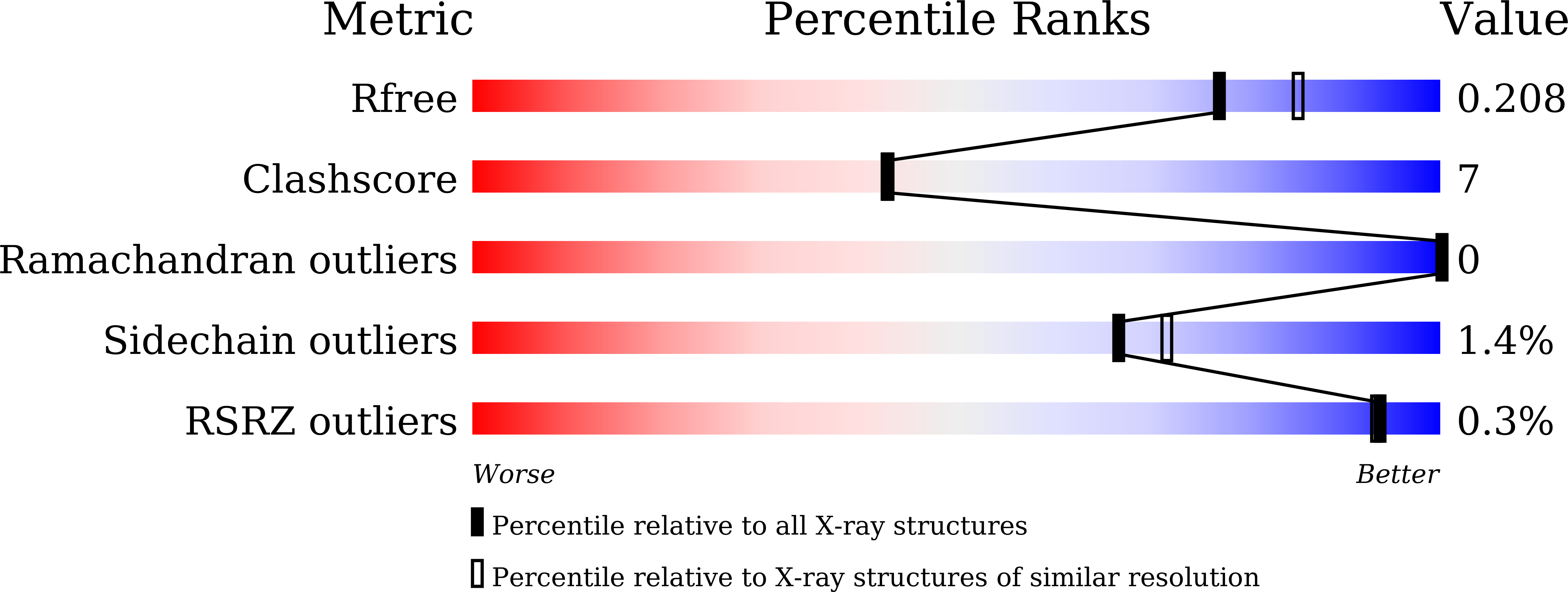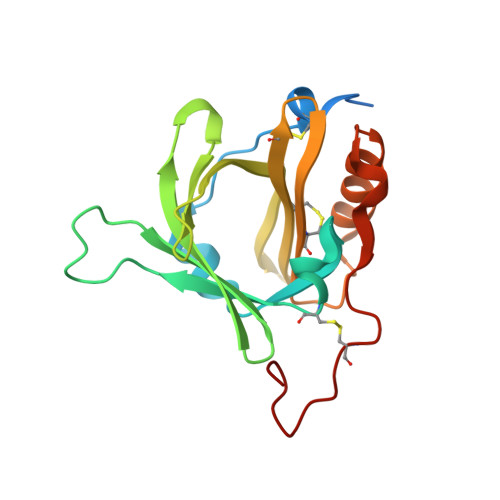Structure-Based Site-Directed Mutagenesis of Hydroxynitrile Lyase from Cyanogenic Millipede, Oxidus gracilis for Hydrocyanation and Henry Reactions.
Chaikaew, S., Watanabe, Y., Zheng, D., Motojima, F., Yamaguchi, T., Asano, Y.(2024) Chembiochem 25: e202400118-e202400118
- PubMed: 38526556
- DOI: https://doi.org/10.1002/cbic.202400118
- Primary Citation of Related Structures:
7YAX, 7YCB, 7YCD, 7YCF, 7YCT - PubMed Abstract:
Hydroxynitrile lyase (HNL) from the cyanogenic millipede Oxidus gracillis (OgraHNL) is a crucial enzyme in the cyanogenesis pathway. Here, the crystal structures of OgraHNL complexed with sulfate, benzaldehyde (BA), (R)-mandelonitrile ((R)-Man), (R)-2-chloromandelonitrile ((R)-2-Cl-Man), and acetone cyanohydrin (ACN) were solved at 1.6, 1.7, 2.3, 2.1, and 2.0?? resolutions, respectively. The structure of OgraHNL revealed that it belonged to the lipocalin superfamily. Based on this structure, positive variants were designed to further improve the catalytic activity and enantioselectivity of the enzyme for asymmetric hydrocyanation and Henry reactions.
Organizational Affiliation:
Biotechnology Research Center and Department of Biotechnology, Toyama Prefectural University, 5180 Kurokawa, Imizu, Toyama, 939-0398, Japan.

















